Car Accidents
Study: Pedestrian Fatalities Are Rising in Massachusetts, Across U.S.
Walking, even in the crosswalk, is becoming more dangerous.
The Governors Highway Safety Association (GHSA) is projecting a 10 percent increase in pedestrian fatalities in traffic crashes across the U.S. last year. This marks the largest increase in four decades, since data was first collected.
The official tally shows an estimated 2,368 pedestrians were killed between January and June of 2015. Researchers expect annual figures to reach the 10 percent mark.
In Massachusetts, 34 pedestrians were killed during the first half of 2015, up 26 percent from 27 fatalities in 2014.
Already in 2016, there have been numerous pedestrian fatalities. WalkBoston, a non-profit advocacy group, recently reported 11 people were killed while walking in Massachusetts in January alone. The accidents were reported in South Hadley, Malden, South Yarmouth, Worcester, Roslindale, Dorchester, Reading, Framingham, South Boston, Quincy and other communities.
In at least four cases, pedestrians were tragically killed while walking in a crosswalk, where they should have special protection under Massachusetts law.
“The law is clear. Pedestrians have the right of way when crossing the street in a crosswalk or at an intersection with the “Walk” signal,” said Attorney Ronald E. Gluck, who has represented victims of pedestrian accidents in Boston for 35 years.
Gluck added, “Drivers who disobey this law can expect to face stiff consequences. They can expect to be charged criminally, especially if there is injury or death. But a police officer can charge any driver who violates the law, even if there is no injury. They can also expect to face consequences in a civil case brought by the injured pedestrian or the family of a pedestrian who was killed.
About Our Experience
Attorney Ronald E. Gluck recently negotiated a $1.25 million settlement for the family of a woman who was hit and killed in a crosswalk in Massachusetts. Read the case report here. To learn more about the law firm, visit our website.
.
Message to Massachusetts Lawmakers: Time for Cell Phone Ban
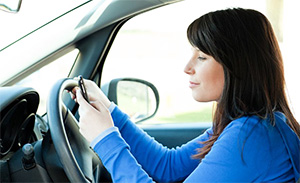 The Massachusetts State Senate is expected to consider a ban on hand-held mobile electronic devices while driving. Many feel a ban is long overdue and we agree.
The Massachusetts State Senate is expected to consider a ban on hand-held mobile electronic devices while driving. Many feel a ban is long overdue and we agree.
“Even New Hampshire has gone hands-free. It’s time for Beacon Hill to act,” wrote the Boston Herald editorial board.
The Senate is expected to consider the ban Thursday. Under the proposed legislation, Massachusetts drivers could still talk on the phone using hands-free technology.
Drivers would receive a $100 fine for the first violation, $250 for the second and $500 for all subsequent violations. Drivers cited three times would receive an auto insurance surcharge.
The bill would change the law in Massachusetts for all drivers over 18. Junior operators are already banned from cell phone use behind the wheel.
According to the National Safety Council, cell phone use is now estimated to be involved in 26 percent of all motor vehicle crashes. At any given moment of the day, 660,000 drivers are using cell phones or manipulating electronic devices while driving, according to the National Highway Traffic Safety Administration (NHTSA). The NHTSA also reported one survey found almost half of all drivers will answer an incoming call while driving. One in four drivers is willing to place a call on all, most, or some trips.
Texting While Driving Bans
In 2010, then-Massachusetts Governor Deval Patrick signed a bill into law which banned texting while driving. The state is in good company; today, 46 states and the District of Columbia have banned texting while driving. By contrast, only 14 states have banned hand-held cell phone use, including New Hampshire, Vermont and Connecticut. Maine and Rhode Island have banned texting while driving but hand-held cell phone bans have failed to gain enough support.
Related:
Read the Boston Herald’s recent editorial on a hand-held cell phone ban in Massachusetts.
Summary of the Safe Driving Law, Massachusetts Registry of Motor Vehicles
Read More
Halloween Safety: Trick-or-Treat Safety Tips
 Many of us are looking forward to the ghosts, goblins and treats of Halloween this weekend. But while a lot of fun, Halloween is also one of the most dangerous days of the year for pedestrians, particularly children. The National Highway Traffic Safety Administration (NHTSA) routinely reports that traffic accidents involving drunk drivers and pedestrians increase on Halloween.
Many of us are looking forward to the ghosts, goblins and treats of Halloween this weekend. But while a lot of fun, Halloween is also one of the most dangerous days of the year for pedestrians, particularly children. The National Highway Traffic Safety Administration (NHTSA) routinely reports that traffic accidents involving drunk drivers and pedestrians increase on Halloween.
For children, the risk of being hit by a car and killed more than doubles on Halloween, according to Safe Routes Worldwide.
We want you to have fun and to be safe on Halloween. Please read our safety tips before trick-or-treating:
1) Stay Visible to Cars. Buy neon reflective clothing for your child and yourself. This can be a vest, an arm band or reflective tape. Also carry flashlights, one per person.
2) Costume Check. Make sure your child can safely walk without tripping in their costume and see through any masks.
3) Stay With Your Child. Go trick-or-treating with your child and really pay attention as they walk from house to house. Tag along if they go with friends.
4) Remind Your Child To Stay Off The Street. You probably already tell your child this daily, but really impress this upon them again for Halloween and reward them for doing it.
5) Plan Your Halloween. Many trick-or-treaters travel between 4 p.m. and 9 p.m. This year, Halloween falls on a Saturday night, so activity may extend later and there may be more gatherings. Find out what will be happening in your community through social media or ask your local town office or neighbors. You want to know what to expect, whether you are trick-or-treating or going out to a party or weekend job.
6) Remember the Cyclists. Watch out for cyclists as you drive or take your children trick-or-treating. Pedestrians should stay on the sidewalk, even if it gets crowded, and save the side of the road for the cyclists.
7) Familiarize Yourself with the Halloween Route. If you are trick-or-treating in another neighborhood, take a drive through at night with your child beforehand, even if you are familiar with the area. Take note of where the roads are well-lit, the location of crosswalks, and how long the roads stretch.
8) Look for Crosswalks. Always cross the street at crosswalks, when available.
Reminder for Drivers. Try to get home early if you can, before the trick-or-treaters arrive or stay out until after they finish. Commit to travel slowly, put your cell phone away and do not drive under the influence of alcohol. If you plan to drink, find a designated driver or bring cab fare.
Read More
Check Your Child’s Passenger Safety Seat
 Motor vehicle accidents are a leading cause of injury and death for children. A properly installed child safety seat reduces the risk of injury by approximately 80 percent and of death by 28 percent, compared to children in seat belts alone.
Motor vehicle accidents are a leading cause of injury and death for children. A properly installed child safety seat reduces the risk of injury by approximately 80 percent and of death by 28 percent, compared to children in seat belts alone.
Child safety seats are required in Massachusetts and every other state. They are one of the first steps a parent takes to protect a child when they leave the hospital and get in the car. But they are hard to use and many parents struggle even as children get older.
Nearly 3 out of 4 children are not properly fastened in their car seats, according to a recent National Highway Traffic Safety Administration (NHTSA) survey. If a child safety seat is not properly installed, it cannot fully protect a child in a car accident.
Child Passenger Safety Week
Child Passenger Safety Seat Week, sponsored by the NHTSA, began last weekend and runs through next Saturday, Sept. 19th, which is also National Seat Check Saturday. We encourage parents to have your child safety seat checked. Check your local newspaper or social media for car seat check events near you. Here are other resources:
Websites for Parents to Visit
Massachusetts Child Passenger Safety Events
Child Passenger Safety Seat Inspection Sites
Child Passenger Safety Week is also a good reminder to check if your child safety seat has been recalled and for parents to prepare for changes in routine. If someone else picks your child up at school or daycare, you must have a child safety seat available.
Massachusetts’ Child Passenger Safety Seat Law
In Massachusetts, children must be secured in child safety seats for the first few years, then booster seats until they are eight years old or over 57 inches tall. Children should always be seated in the back seat of the car, as it is the safest place for them in case of an accident.
Infants. All infants and toddlers should ride in a rear-facing car seat until they are 2 years old or reach the weight and height limit set by the car seat manufacturer.
Toddlers/Preschoolers. At this age, children should use a forward-facing car seat with a harness until they reach the height and weight limits set by the car seat manufacturer.
School-aged Children. The next step is a booster seat. Children must sit in a booster seat in the back-seat until he or she is 8 years old or over 57 inches tall.
Seatbelts. Children can then move into a seat belt in the backseat if they are big enough. They should use both lap and shoulder seat belts.
To learn more, visit this guide on child safety seats in Massachusetts.
About Breakstone, White & Gluck
The Boston personal injury attorneys of Breakstone, White & Gluck have over 100 years combined experience representing clients who have been seriously injured in motor vehicle accidents, truck accidents and motorcycle accidents. If you have been injured, it is important to learn your rights. For a free legal consultation, contact us at 800-379-1244 or 617-723-7676 or use our contact form.
Attorney Marc Breakstone Speaks for Clients in Hit and Run Accident With Possible Link to Former Patriot Player’s Mercedes
Boston News, Weather, Sports | FOX 25 | MyFoxBoston
As State Police investigate a weekend hit-and-run car crash in Foxborough, attorney Marc L. Breakstone spoke on behalf of his clients who were injured. Breakstone told The Boston Globe there is “overwhelming evidence” that his clients’ vehicle was struck by the Mercedes-Benz Mabach registered to ex-New England Patriots linebacker Brandon Spikes.
Breakstone, a personal injury attorney at Breakstone, White & Gluck in Boston, is representing the Billerica family who was struck in the early Sunday morning crash. The parents and child were taken to the hospital with minor injuries after their Nissan Murano was struck suddenly.
Breakstone said the car that struck his clients was likely traveling at least 80 to 85 miles per hour and that his clients never saw any headlights.
“It is an extraordinary act of negligence for one vehicle to strike another vehicle that’s traveling 60 miles an hour on the highway,” Breakstone told the Globe. “I suspect that whatever that driver was under the influence of is the reason that the driver left the scene.”
Around the same time, State Police were notified the 2011 Mercedes-Benz Maybach registered to Spikes had been abandoned nearby in the median strip of Interstate 495 in Foxborough. A Mercedes roadside assistance service operator contacted State Police, telling them the driver of the vehicle reported hitting a deer.
State Police say the investigation is ongoing and they have not established who was driving the Mercedes-Benz Maybach or whether the Maybach hit the other car.
Spikes was released by the Patriots on Monday. He played for the Patriots from 2010 through 2013, then joined the Buffalo Bills for the 2014 season. He had recently returned to the Patriots on a one-year deal which would have been worth up to $2 million.
Breakstone told the Globe his clients are working to move past the hit-and-run accident.
“They want their normal lives back,” he said. “They want their good health and their comfortable state of mind. … They’re alarmed, first, that they could have been killed. They’re alarmed that it may have been an NFL player behind the wheel, and they would just [prefer to] not be in the spotlight and just have a return to normalcy.”
Related Coverage:
Accident Blindsided Family, Lawyer Says, The Boston Herald.
Patriots release Brandon Spikes amid crash investigation, WCVB.
Police probing whether ex-Patriots linebacker Spikes’ car hit Billerica family’s, The Lowell Sun.
Parents: Time to Talk to Teen Drivers About Safety
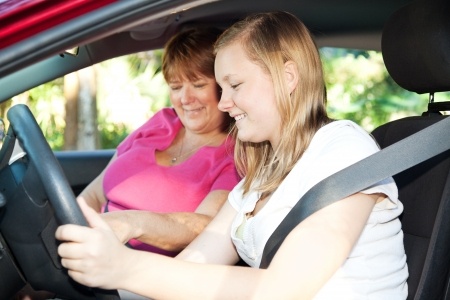 With the snowbanks nearly gone, your teen driver is likely asking for the car keys. Now is a very good time to talk to them about paying attention on the roads and following traffic laws.
With the snowbanks nearly gone, your teen driver is likely asking for the car keys. Now is a very good time to talk to them about paying attention on the roads and following traffic laws.
Young people ages 16 to 19 are nearly three times more likely to be in a fatal motor vehicle crash than other age groups. While cell phone use is a frequent cause, there is also simple inexperience. If you are a parent, you know this conversation takes a lot of work and a lot of repetition.
We offer these safety tips for teen drivers:
- Always wear your seat belt.
- Keep your hands on the wheel and your eyes on the road.
- Do not take phone calls while driving. The caller can leave a voicemail.
- Remember that under Massachusetts Junior Operator License, teen drivers are not allowed to use cell phones behind the wheel. You cannot send texts or make phone calls. If you are caught, you may be fined and your license suspended. It is important to think about these steps for the safety of others and to keep yourself out of trouble.
- If you must use your phone, pull off the road to a safe area. Put the car in park and remove the keys. Or ask a passenger to call or answer for you.
- Travel with the phone in the best place to reduce distraction. If your phone ringing or lighting up with messages distracts you, set it in a bag in the backseat.
- Remember that whatever is happening on your phone can wait, whether it is a social media post, e-mail or photo. It really can.
- Be mindful of distractions created by loud music or intense conversation. Explain to passengers you need to limit conversation while driving.
- Remember you cannot carry passengers under the age of 18 during the first six months with a Massachusetts Junior Operator License. The one exception is you can drive with siblings.
- Do not look up phone numbers or GPS directions on your phone while driving.
- Many cars have dashboard GPS systems and infotainment systems. Turn them off until you are more experienced.
Other Safe Driving Habits
- Never consume alcohol and drive. No driver should, but you are more likely than older drivers to get in car accidents because you lack driving experience.
- Before entering your vehicle, look around for other cars, trucks and hazards. Make sure you provide bicyclists and pedestrians extra time to pass.
- Shift your eyes every two seconds and check the rear-view mirror every five to eight seconds. This will help you focus on driving.
- Do not drive drowsy. If you are tired, you will be less capable of responding to potential car accidents. The Massachusetts Junior Operator License restricts young drivers from traveling between 12:30 a.m. and 5 a.m., unless accompanied by a parent. This is a good step but realize you always have to be aware of your fatigue level and make good decisions at all hours.
- Even if you have your license, keep practicing. For instance, if you are weak backing up, practice backing into a parking space in an empty parking lot with a parent. Keep practicing because you will need these skills going forward and will not always have the time to practice.
- There are construction work zones in many places. Be extra attentive, slow down and watch for workers.
- Check your speed regularly and slow down. A little extra space between you and the car in front of you can make a big difference toward preventing a car accident.
- Drive defensively. Expect the unexpected will happen and you may have to stop or change lanes.
- Signal your intentions to turn or switch lanes early enough to give others time to prepare.
- Do not drive on the highway on your own before you are ready.
- Limit the number of times you drive your friends home after sports practices, to the mail or school events. Every teenager looks forward to driving around with their friends, but teens are more likely to become distracted this way.
- Be careful in school zones and school buses. Slow down and watch out for teenagers and children walking or riding bikes. You are required to stop when school buses stop.
Drive Safely Through Road Construction
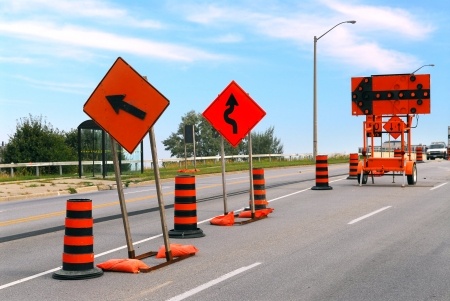 We have all looked forward to Spring this year, waiting for those snowbanks to finally melt so we can drive and walk and ride our bikes more easily. But we will face other challenges soon as construction projects return to the roads.
We have all looked forward to Spring this year, waiting for those snowbanks to finally melt so we can drive and walk and ride our bikes more easily. But we will face other challenges soon as construction projects return to the roads.
National Work Zone Awareness Week is now being observed by safety officials across the country. The annual campaign is held at the start of construction season to encourage safe driving through highway work zones and construction sites. The goal is to protect drivers, passengers, construction workers and others from injuries.
Drivers
- Drivers and passengers are at the greatest risk in a construction zone, accounting for an average of 85 percent of the deaths in highway work zone crashes, according to the Federal Highway Administration (FHA).
- In 2010, 576 people died in work zone crashes, the equivalent of one work zone fatality every 15 hours in this country, according to FHA.
Construction Workers
- Construction workers face many risks on highway work zones. In 2013, 105 construction workers died at road construction sites in this country, according to the Bureau of Labor Statistics (BLS). Other injuries are not included in this figure.
- Transportation accidents accounted for 66 percent of roadway work zone fatal occupational injuries in 2013. In 69 percent of these cases, a pedestrian worker was struck by a vehicle. Backing vehicles out accounted for 27 of the 48 pedestrian vehicular accidents.
Safety Reminders for Drivers
- Move Over. It’s the law in Massachusetts and most other states. Make sure you move over when you see construction signs and lights. And if additional room is not available, slow down.
- No Speeding. In Massachusetts, you can face double the original fine for speeding in a work zone and cause a serious car accident.
- No Distracted Driving. Pay extra attention to the roads as you travel through work zones; reduce distractions in your car from information systems and passengers.
- No Cell Phone Use. Eliminate distracted driving. Do not use your cell phone to text, check e-mail or social media. If you need to use your phone, use a hands-free system.
- Expect the Unexpected. You may not have any notice of a work zone until you are stuck in it. Be patient and be prepared to follow the signs and traffic cops and flaggers. This may mean not following the traffic signals at times.
- Pay Attention to the Signs and Look for Alternate Routes. Look for signs which direct you to detour routes and share other important information. Do not use your GPS until you are safely outside of the construction work zone.
- Mass511. The state’s traffic information system may help you avoid construction areas. Visit the webpage or call.
Safety Reminders for Pedestrians
- Use crosswalks in construction areas if it is safe to do so. If not, follow pedestrian pathways which have been marked by the construction operation.
- Watch how traffic flows before you step out into the street. You may be able to identify a safer path.
- If you know you will be walking through a work zone, consider carrying a neon glow vest and wear it as you cross a street. You want to stand out to road traffic, police officers and flaggers and the construction crew.
Safety Reminders for Cyclists
- Cyclists want to learn about roadway construction ahead of time. After all, there is nothing much worse than a mile of recently milled black top to shake your fillings loose. Call the local town or city hall or call the Mass511 service.
- Some of the cycling clubs in the Boston area also do a good job of alerting members of safety issues. One popular source of information is the Charles River Wheelmen’s safety articles. Look for cycling clubs in your area and ask if they offer a members forum or a newsletter.
Safety Reminders for Construction Workers
- Be vigilant about following OSHA and other safety procedures of your profession.
- If you are working on foot, make sure you are always aware of any vehicles around you and where there are flaggers and traffic cops.
Related links:
- National Work Zone Awareness Week.
- Highway Work Zone Accidents, by the Centers for Disease Control and Prevention.
Snow Plow Accidents Have Killed Two People in Boston Area
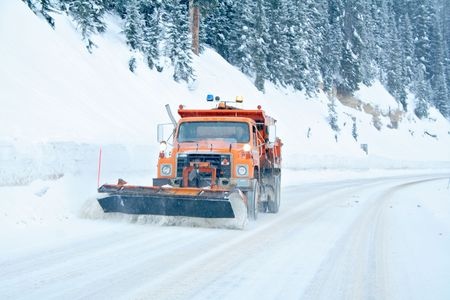 During the past few weeks, snow plows have had little rest in the Boston area and Central Massachusetts. For most of us, they have been part of the background noise of a harsh winter and we have not even noticed them. But as of this week, two pedestrians have died as a result of snow plow crashes in the Boston area. Please be aware of the risks and talk to your family members about how you can stay safe.
During the past few weeks, snow plows have had little rest in the Boston area and Central Massachusetts. For most of us, they have been part of the background noise of a harsh winter and we have not even noticed them. But as of this week, two pedestrians have died as a result of snow plow crashes in the Boston area. Please be aware of the risks and talk to your family members about how you can stay safe.
On Monday afternoon, a 60-year-old employee at a Whole Foods store in Medford was struck and killed while walking across the store’s parking lot. The employee was just leaving work. The area was not open to the public at the time. The snow plow was operated Yerardi Landscape and Design of Medfield, authorities said. The snow plow accident remains under investigation by Medford Police and the Massachusetts State Police.
A week ago, a 57-year-old Weymouth woman was struck and killed by a snow plow driver who was clearing the parking lot outside her condominium complex, Tara Gardens. The driver had just cleared the woman’s parking space for her and a friend told The Boston Globe she had gotten out of her vehicle to ask him not to block her vehicle in as he left. Weymouth Police and the Norfolk County District Attorney’s office are investigating the snow plow death.
We share a few safety tips:
1) Listen to Advisories. Follow the recommendations of state and local officials about when it is best to avoid walking or driving outside.
2) Wear Neon-Colored Vests and Bright Clothing. If you are walking in the street, a neon vest or bright clothing should be a requirement, even during the day. You want snow plow drivers, as well as other drivers, to see you.
Keep a vest in your car. You can use your vest when walking from your car to your destination. It may also come in handy someday if you break down.
3) Do Not Approach Plow Trucks. Pedestrians should never approach plow trucks. Let them stay focused on removing snow.
4) Contact the Property Owner Instead. If you live in an apartment or condo complex, keep the phone number of your building management company handy on your cell phone. If you have a complaint, take a photo to send to the building owner, who can share it with their plow company.
Do the same if you work at a business office, unless you are the owner; then safe snow removal is your responsibility.
5) Expect Plows Everywhere, Even After the Snow Ends. Expect plows everywhere for a while. Even when it is not snowing, expect plows will be out trimming down high snow banks and opening up narrow roads.
6) Do Not Follow Plow Trucks Too Closely. When driving, stay a few car lengths behind plow trucks. The snow plow could hit something hard unexpectedly and not be able to stop. Avoid passing snow plows.
7) If You Have An Accident with a Snow Plow Truck. If you are driving, make sure you stop in a safe place. As you do, take note of what the plow truck looks like and the license plate if you can do so safely. If the plow driver does not stop, immediately notify the local police department to file a car accident report.
Check Your Car’s Airbags After Recalls Linked to Four Deaths, Injuries
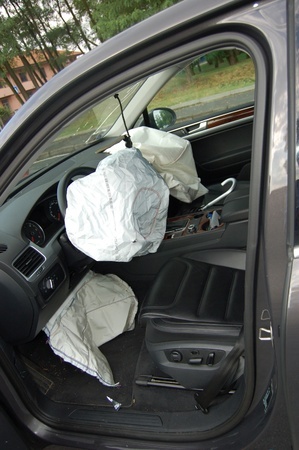 Last week, the National Highway Traffic Safety Administration (NHTSA) issued an advisory urging the public to act immediately on recall notices impacting 7.8 million cars with Takata airbags. The airbags are now linked to four deaths and more than 100 injuries.
Last week, the National Highway Traffic Safety Administration (NHTSA) issued an advisory urging the public to act immediately on recall notices impacting 7.8 million cars with Takata airbags. The airbags are now linked to four deaths and more than 100 injuries.
If you have not already done so, please immediately check if your vehicle’s airbags have been recalled. Visit Safercar.gov. Select your auto manufacturer and enter your vehicle identification number, or VIN.
While car manufacturers are required to notify owners of recalls, do not wait to receive a letter for the company. While many of the airbags were previously recalled, you may have missed an earlier letter or may not have appreciated how serious the recall actually is.
The recalls involve Toyota, Honda, Mazda, BMW, Nissan, Mitsubishi, Subaru, Chrysler, Ford and General Motors. More than 5 million of the cars are Honda models. Many are older vehicles from the 2000-2007 model years.
After you check the site and contact your dealer, be prepared to wait. Unfortunately, many dealers do not have the parts they need to meet demand.
Prior to last week’s announcement, 2014 was already the worst year ever for auto recalls, with 50 million vehicles recalled. One in five cars in our country has a defect. General Motors (GM) paid a $35 million fine last spring and has recalled 26 million vehicles.
Why are the airbags defective?
These airbags have inflator mechanisms which can rupture and explode, sending metal and plastic shrapnel at drivers and passengers. They use excessive force. Police were investigating the death of a woman who had been in a car accident as a homicide because she appeared to have stab wounds on her neck. Then her relatives received a letter about the airbag recall to her from home from her car manufacturer. See The New York Times article, “It Looked Like a Stabbing, but Takata’s AirBag Was the Killer.”
How long will it take to get a replacement part?
It is hard to say. Some dealers already have the replacement parts ready, but others are on back order. Some car manufacturers are warning car owners not to carry front-seat passengers until the airbag defect is fixed. Toyota is telling dealers to shut the passenger seat airbags off in all vehicles that are brought in until new parts are available.
Can I get alternate transportation?
Probably not. It is unfortunate, but most of us will have to wait for the new parts to arrive. Your local dealer may also offer you a trade-in.
I did not buy my car from a dealer. I bought it from a private party.
Check your paper work from your car’s sale for the name of the dealer who originally sold the vehicle. If you cannot find this, contact any local dealer of your vehicle and ask them to assist you.
Should I purchase a car under recall?
Unless the specified repair has been made, a dealer is not allowed to sell you a car under recall and you should never purchase one under recall from a private party either.
When you are looking to buy a car, write down the model and year, then search for it online at SaferCar.gov or the Consumer Reports Recall database.
I was planning to sell my car.
You should wait for any serious defect to be repaired before selling your car. This is the safest and most ethical option regardless of the law. But there are laws to consider, including the Massachusetts Used Vehicle Warranty Law, which states private party sellers have to disclose defects to buyers.
About Breakstone, White & Gluck
The Boston product liability lawyers at Breakstone, White & Gluck have over 100 years combined experience representing clients injured by negligence in Massachusetts. If you have been injured, learn your rights. For a free legal consultation, contact us at 800-379-1244 or 617-723-7676 or use our form.
Distracted Driving Lessons in Massachusetts
 This month, students at four high schools in Massachusetts will sit down at computer simulators and learn what it feels like to text or use a cell phone while driving and then crash.
This month, students at four high schools in Massachusetts will sit down at computer simulators and learn what it feels like to text or use a cell phone while driving and then crash.
This is part of Arbella Insurance Foundation’s Distractology 101 program, which will visit Braintree High School, Phillips Academy in Andover, Falmouth High School and Sacred Heart High School in Kingston. Although the young drivers will not actually suffer or cause injury, or feel the remorse of having caused the collision, they will be taught the lesson that distracted driving behaviors, such as cell phone use, using a GPS and even eating and drinking, can result in car accidents and serious injuries. These behaviors should be considered as or more dangerous than speeding or running a red light.
Consider these statistics from the National Highway Traffic Safety Administration (NHTSA):
- 10 percent of all fatal crashes in 2011 were reported as distraction-affected crashes (3,331 people killed).
- Among those who were killed, 12 percent died in a car crash which involved cell phone use.
- Some 17 percent of all injury crashes in 2011 were reported as distracted-affected crashes (or 387,000 people injured).
- Among those who were injured, 5 percent were injured in a car accident which involved cell phone use.
Laws have been implemented to reduce the dangers caused by distracted driving. While no state bans all drivers from all cell phone use, hand-held cell phone use is not permitted in 15 states, including Vermont as of Oct. 1.
Laws related to texting while driving are much more prevalent. Texting while driving is now against the law in 44 states. Washington passed the first ban in 2007. Massachusetts implemented its law four years ago. The law, St. 2010, c. 155, bans texting by drivers, including reading, writing or sending messages. Drivers cannot text while driving or sitting at red lights, intersections or other public ways. This is a primary offense, meaning police can pull drivers over when they suspect the behavior, even without any other cause.
Despite these laws, drivers here and in other states still text and check their social media accounts. Younger drivers under 25 are two to three times more likely to text or e-mail while driving than others, according to the NHTSA. But these violations are not limited to young drivers, as the evidence is that older drivers are also engaging in this prohibited behavior.
Fortunately there is some evidence that these laws are starting to work. Recently The Journal of American Health reported that traffic fatalities had dropped 3 percent in states which have primary enforcement laws like Massachusetts. States that ban younger drivers from texting while driving saw an 11 percent drop. The journal studied national traffic data over 11 years.
States may continue to pass laws to reduce distracted driving, but drivers carry responsibility for putting down the phone and becoming aware of other distracting behaviors, such as eating and drinking, talking to passengers, grooming, reading maps, using a GPS, watching a video or adjusting a radio or music player.
There are some good safety resources out there to help families understand the problem and the attitudes and behaviors that contribute to it. We encourage you to take a look and share them with your colleagues at work and with your family, friends, and children.
For More Information
About Breakstone, White & Gluck
The Boston motor vehicle accident lawyers at Breakstone, White & Gluck have over 100 years combined experience representing clients seriously injured in car accidents. If you have been injured, it is important to learn your rights. For a free legal consultation, contact us at 800-379-1244 or 617-723-7676 or use our contact form.

